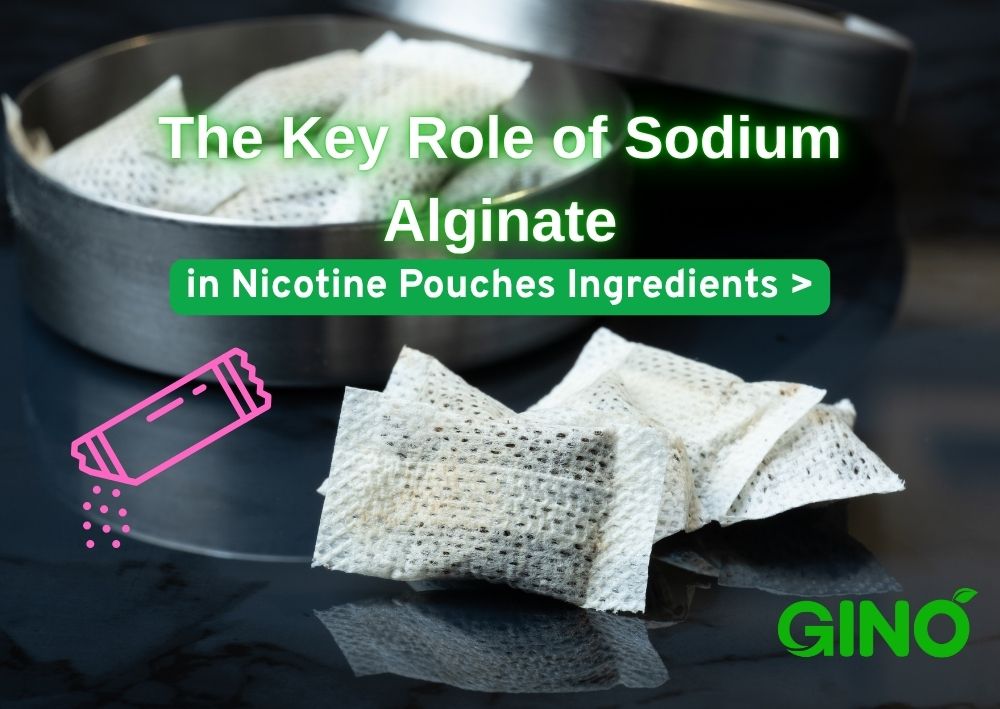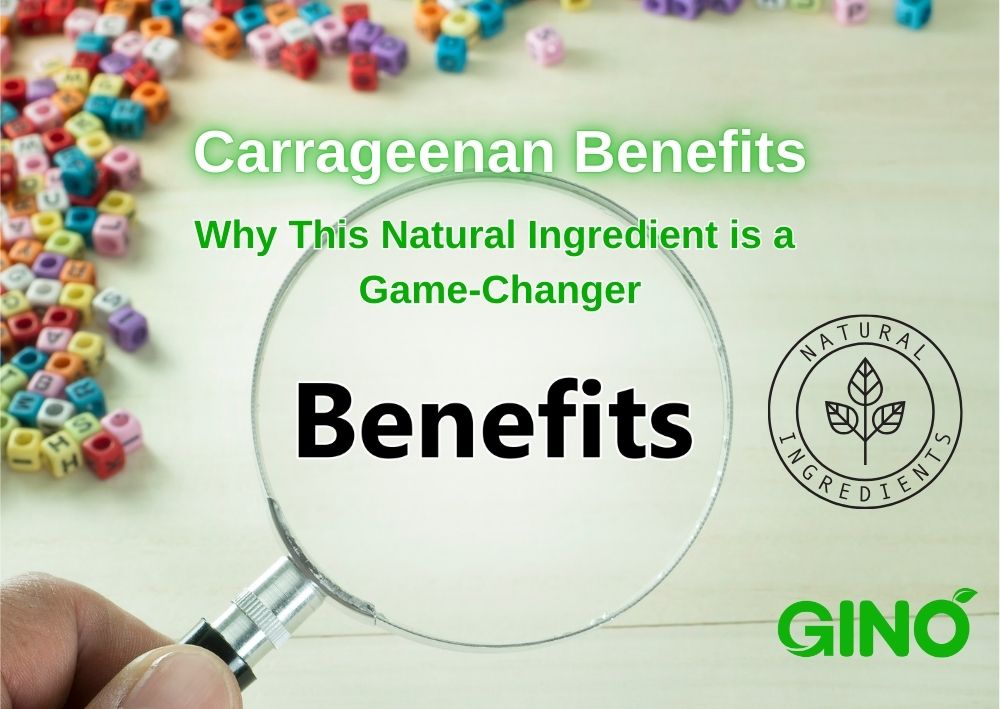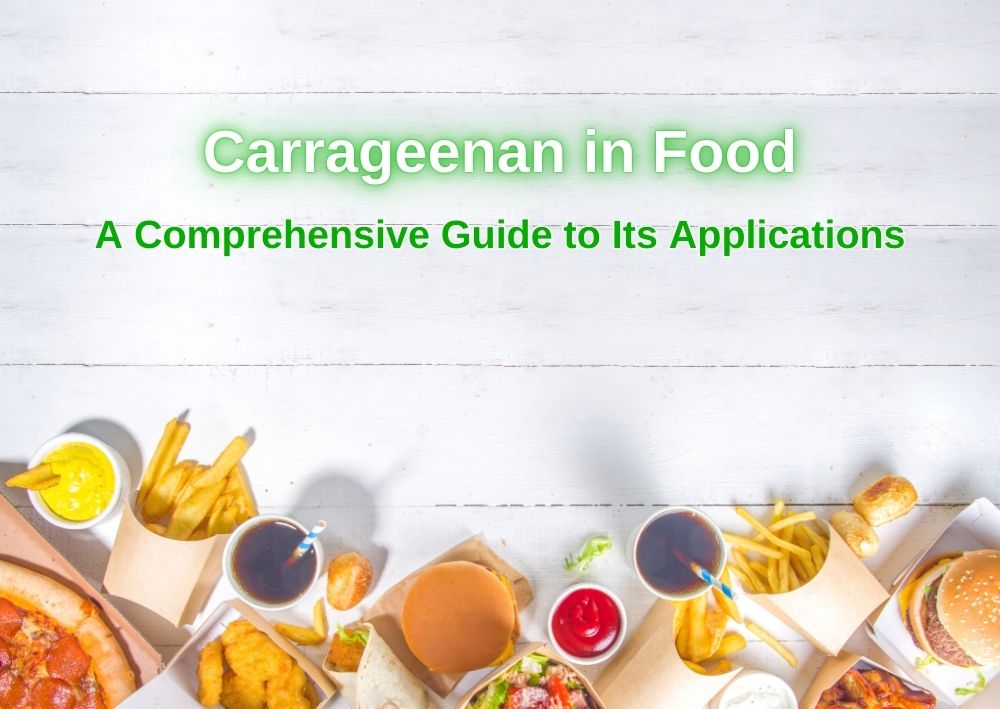Carrageenan Applications and Dosage in the Food Industry
Carrageenan Applications and Dosage in the Food Industry

Carrageenan is an edible gum extracted from red algae. In addition to making jelly, carrageenan can also be used in the production of many foods, so let's take a look at the carrageenan applications and its dosage in the food industry.
1. Carrageenan Applications in the Food Industry
1.1 Carrageenan in Jelly
Carrageenan, as a good coagulant, can replace conventional agar, gelatin and pectin.
The jelly made of agar is not elastic enough and the price is high.
The disadvantage of jelly made of gelatin is that it has a low coagulation and melting point and requires low-temperature refrigeration for preparation and storage.
The disadvantage of using pectin is that it requires the addition of highly soluble sugar and the adjustment of the proper pH to solidify.
Therefore, carrageenan has become the most excellent and commonly used gelling agent for jellies.
1.2 Carrageenan in Gummy Candy
The use of carrageenan for fully transparent fruit fondant has the following advantages.
- Good flavor release - strong flavor of fresh fruits
- Proper sugar level
- Good mouthfeel without sticky teeth
- Clarity is stronger than agar
- Lower price than agar
Adding carrageenan to general candy and sandwich candies can make the candy taste smooth, more ductile, less sticky and more reliable.
1.3 Carrageenan in Ice Cream
In the production of ice cream, carrageenan makes the fat and other solid ingredients spread evenly, avoiding the separation of milk components and the increase of ice crystals during production and storage.
It makes the ice cream texture fine, smooth and tasty.
In ice cream manufacturing, carrageenan is effective with the positive ions in cow's milk, resulting in distinctive gelling characteristics that enhance the formability and resistance to melting of ice cream, improve the reliability of ice cream during temperature fluctuations, and make it less likely to melt when placed in storage.
Gum in Ice Cream
Impact of Gums on Melting Speeds of Ice Cream
1.4 Carrageenan in Dairy Products
A noteworthy property of carrageenan is its ability to stabilize casein micelles.
Due to its versatility, different properties and synergy with many thickening agents, it can impart various forms and properties to dairy products.
Therefore carrageenan is widely used in neutral dairy products.
1.5 Carrageenan in Meat Products
In meat products, carrageenan is used in a relatively simple way, injected or tumbled and chopped.
The carrageenan is first incorporated into the brine, and with the help of a syringe and tumbling process, it enters the tissue together with the brine solution. Alternatively, carrageenan is poured directly into the meat product for mixing.
The amount of targeted use depends on the amount and type of phosphoric acid used, the quality of the meat, the expected weight gain, etc.
Carrageenan can significantly reduce cooking losses, increase product yield, improve toughness, formability and slicability of meat products without affecting their color, aroma and flavor.

2. Carrageenan Functions in the Food Industry
Carrageenan is mainly used as a gelling, thickening, stabilizing, and water-holding agent in the food industry.
- Used as a suspending agent in dairy beverages.
- Used as a gelling agent in jellies.
- Used as a thickening and stabilizing agent in pudding, yogurt, whipped cream, ice cream and cheese.
- Used as water-holding agent in the production of processed meat products.
3. Dosage of Carrageenan in Food
Carrageenan can form gel at a concentration of 0.5% or more in water system, and the gel concentration can be as low as 0.1-0.2% in milk system.
The detailed dosage of carrageenan is as follows.
- In jelly: 0.5%-1.0% of carrageenan is added.
- In meat jelly: 0.5%-1.0%
- In fish jelly: 0.5%-1.0%
- In fruit drinks: 0.1%-0.2%
- In sauce: 0.2%-0.5%
- In ketchup: 0.1%-0.25%
- In Western ham: 1.0%-2.0%
- In imitation milk: 0.05%
- In ice cream: 0.1%-0.3%
- In yogurt: 0.2%-0.5%
- In condensed milk: 0.005%
- In chocolate milk: 0.01%-0.035%
- In whipped cream: 0.05%-0.15%
- In cheese: 0.01%-0.05%













